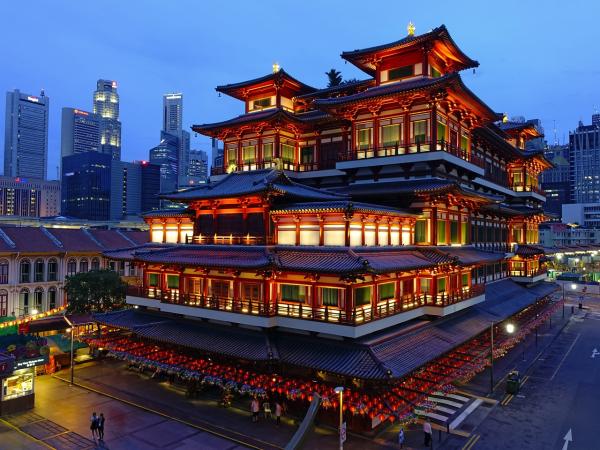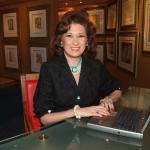Two cases stand out as a beacon of sound jurisprudence, requiring governmental restraint, even in the face of pandemics. In Jew Ho v. Williamson, the court annulled a quarantine against the Chinese community when the Bubonic Plague struck San Francisco in the Spring of 1900. The legal community touts the decision as a testament to the 14th Amendment and the doctrine of Equal Protection. But in retrospect, this reading overlooks the adverse public health consequences generated by partisan doctors and the impact of economic drivers of policy. It also demonstrates unfamiliarity of the law with public health responses.
The Year of the Rat
On March 7, 1900, paradoxically the year of the Rat by the Chinese calendar, some 25,000 Chinese residents of San Francisco’s Chinatown awoke to find themselves barricaded. Surrounded by police, ingress, and egress were blocked to Chinese residents for twelve blocks bordered by four streets: Broadway, Kearney, California, and Stockton. White people were free to come and go as they pleased.
The night before, Wong Chut King, a Chinese immigrant and lumber seller, was found dead in a rat-infested basement of the Globe Hotel on DuPont Street. By morning, autopsy findings by noted bacteriologist Dr. Joseph Kinyoun confirmed Bubonic Plague. Immediately, the mayor implemented the Board of Health directive sealing off Chinatown within a cordon sanitaire.
Bubonic Plague manifests with buboes swollen lymph nodes [1], torturing its victims, who retch blood and vomit, suffering excruciating pain before fever kills them. The process is swift and sudden. Death occurs within two to seven days of infection, except for the most severe form, Pneumonic plague, which (blessedly) kills almost instantaneously after inhaling infectious droplets. [2]
"I think the Chinese have been most unfairly treated …It is wrong to close an extensive section like Chinatown simply upon the suspicion that a man might have died of the plague.”
- Consul General Ho Yow.
In response to the March lockdown, the Chinese Consul General, Ho Yow, fought back and allied with Governor Henry Gage, who worried that should word get out that Plague had infiltrated the state, business would suffer. Denying the Plague’s existence outright, the Governor continued his stance for years, even as deaths mounted – accusing Kinyoun of malice for diagnosing the plague as a ruse to blackmail the city for public health funds. The State legislature even suggested that Kinyoun be hanged. Perhaps the attack wasn’t surprising, given that the state’s 40 million dollar fresh fruit business was at stake.
In response to political pressure, the quarantine was lifted two days later. But as the weeks passed and the medical community debated whether their bacteriological techniques were accurate, more cases surfaced. It was time for the appearance of the US Surgeon General, Walter Wyman.
Wyman presented the Chinese with an alternative: be inoculated with an experimental and dangerous vaccine [3] or have their freedom of movement curtailed. The San Francisco Board of Health unanimously approved the plan. Mass inoculation was to begin on May 17, which, per Chinese daily Chung Sai Yat Po, "plunged the town into disorder.” Most of the Chinese community adamantly refused.
Governmental power to impose the vaccine on the Chinese (or deprive them of the right to travel) was denied in Wong Wai v. Williamson, where the court rejected the US Attorney’s unsupported claim “that Asiatics were peculiarly susceptible to the disease” (akin to the initial assertions that the elderly were particularly susceptible to COVID).
Within hours of the Court’s decision, health department heads and business leaders “keen to impress those outside the state's borders with the seriousness of California's commitment to contain the plague outbreak” convened to urge “the board to exercise the utmost care and prudence in whatever it decided.”
The Board decided:
"[to] quarantine persons, houses, places, and districts within the city and county when in its judgment it is deemed necessary to prevent the spreading of contagious or infectious diseases,”
which just happened to be Chinatown. Dr. Kinyoun advised that ill patients be corralled for hospitalization. Still convinced the disease could be spread person-to-person, he nevertheless advised a systemic effort to eradicate rats, even without fully understanding their role in the transmission process.
To contain the fear of spread, the community was immediately impounded. Dr. Kinyion’s notes reveal he called the response a cordon (short for cordon sanitaire), arguably a reasonable public health response under the circumstances. The court, however, consistently used the term “quarantine,” a measure unsuited for the concern as implemented. The distinction is crucial. A cordon sanitaire targets a locality infected by a disease, preventing anyone leaving that area, to contain disease spread outside the district. By comparison, quarantine restricts the movement of exposed individuals who are not (yet) ill. Given that the mechanics of the Plague spread would not be clearly identified until 1903, a cordon sanitaire was arguably a reasonable response at the time.
“Caucasian reaction to the new board action was mixed and initially, at least, followed along partisan lines.
San Francisco’s mayor acknowledged nine dead bodies evidencing plague had been removed from Chinatown. Nevertheless, he still argued that there was no evidence of infection in the city proper, claiming this response was purely precautionary.
The Chronicle agreed, insisting that plague did not exist, asserting “that to suggest otherwise constituted high treason [and was] against the reputation and economic interests of San Francisco.” By comparison, The Examiner acknowledged the Plague’s presence and supported public health responses. The San Francisco Call “was as bitterly partisan … as the Chronicle and … echoed its … stance that the plague was a concoction of either venal or incompetent health officials. Its first reaction to the quarantine … was to ridicule it, insisting yet again that plague allegations were "false and a fraud."
Not long after, Jew Ho, a Chinese grocer who lived and worked on Stockton Street, sued on behalf of himself and the similarly situated 10,000 Chinese. He claimed that the public health approach was schizophrenic. On the one hand, the Board of Health denied the existence of Plague; on the other, they imposed quarantine.
“If plague did exist in Chinatown [he claimed], the ... method of dealing with it … posed serious threats to the health of the Chinese population. … [b]y failing to isolate houses where plague had occurred or individuals who it suspected of having had contact with plague victims, [thereby allowing residents of these places to mingle freely with other inhabitants of the district], and by refusing to permit the Chinese to leave Chinatown, the board was exposing the residents of that district to greater danger of infection.”
The “saw-toothed” nature of the quarantine border, gerrymandered to exclude areas where whites lived or worked, also became apparent. The real purpose of the quarantine, claimed Jew Ho, was "for wrongfully, unlawfully, and tyrannically oppressing, annoying, harassing, and injuring" the Chinese.”
The Chinese bolstered their case with affidavits from ten doctors attesting to the non-existence of the plague, confirmed by a statement from Governor Gage who traveled to Chinatown to make his own inspection. Gage claimed he could find no proof "that the plague alleged to be here is either infectious or contagious."
Judge Morrow, who rendered the opinion, agreed with the Chinese, finding that governmental responses were arbitrary and capricious and violated the claimants' rights.
Indeed, they were. But was the decision, in fact, influenced by the (flawed) argument that there was no plague epidemic? Or perhaps economic factors played a role?
“as I have said, personally the evidence in this case seems to be sufficient to establish the fact that the bubonic plague has not existed, and does not now exist, in San Francisco.”
– Judge Morrow
As one legal scholar noted:
“[P]ublic health decisions from this period reflect a judicial sympathy for free economic enterprise and an interest in rapid commercial development….[and], judges were inclined to invalidate public health when they happened to interfere with business operations... [Indeed] the [Jew Ho] court noted that he had suffered both an "oppressive interference with personal liberty...and [an interference] with [his] right to the pursuit of [his] lawful business."
While the court correctly found that “quarantine” was not properly implemented, we should still consider whether the cordon’s removal was prudent from a public health standpoint: At the time of Judge Morrow’s order, some 11 people in Chinatown had died from plague; by the time the epidemic was declared over in 1904, 119 would perish. During the second wave beginning in 1907, more than 100 more would die.
[1] The first infected lymph node was often in the groin; Bubo derives from the Greek for groin.
[2] The Bubonic Plague is not extinct. In February, an Oregon resident was infected by their cat.
[3] Haffkine’s Prophylactic Vaccine – “Haffkine was the first to prepare a vaccine for human prophylaxis by killing virulent culture by heat at 60 °C. The major limit of his vaccine was the lack of activity against pulmonary … plague.”
This piece is an excerpt from a longer analysis of Pariah-tizatioh or “otherness” as a driver of pandemic response, soon to be published by The Journal Of Law And Social Change (JLASC) Of The U. Of Pa ., School Of Law




